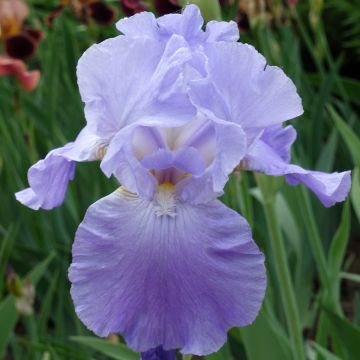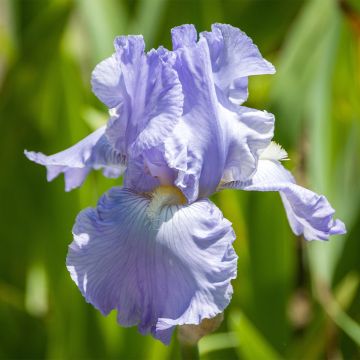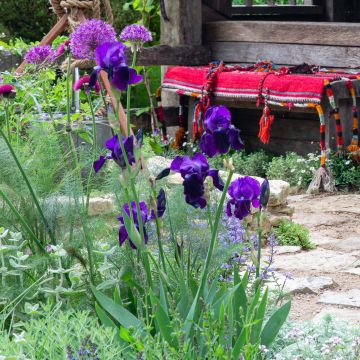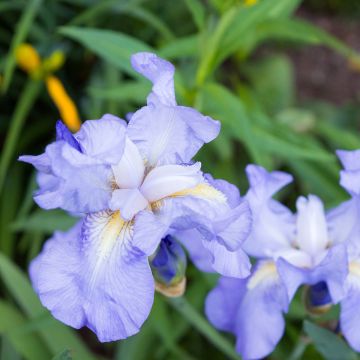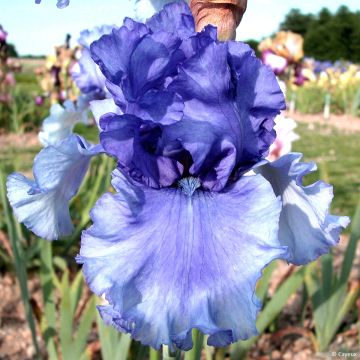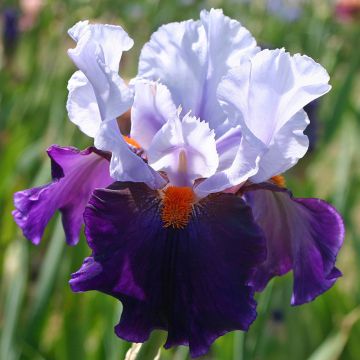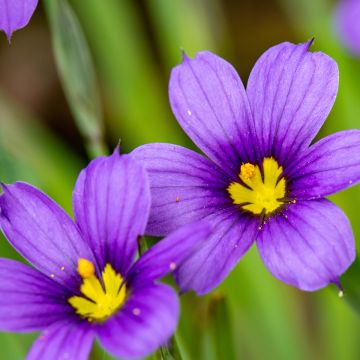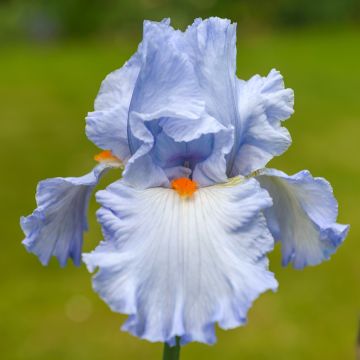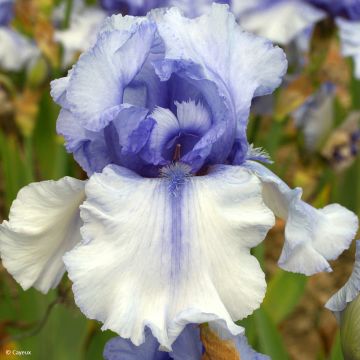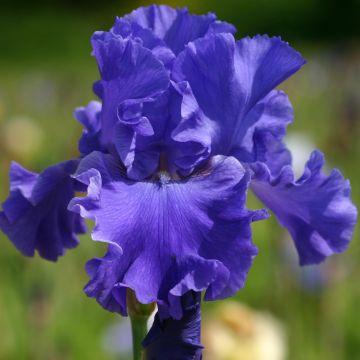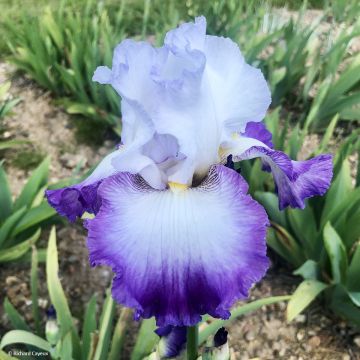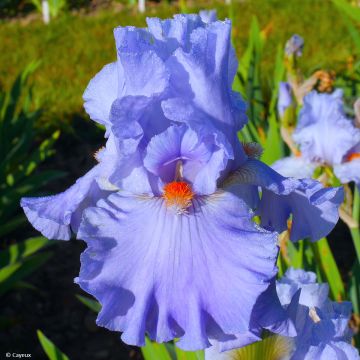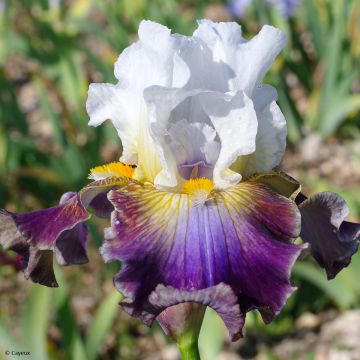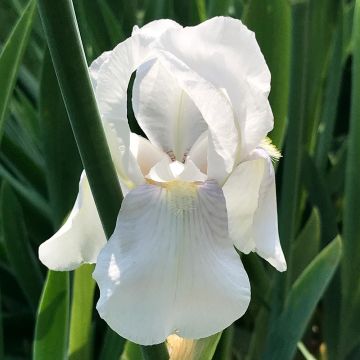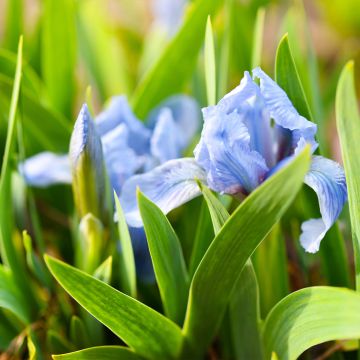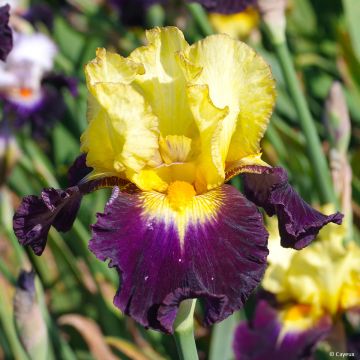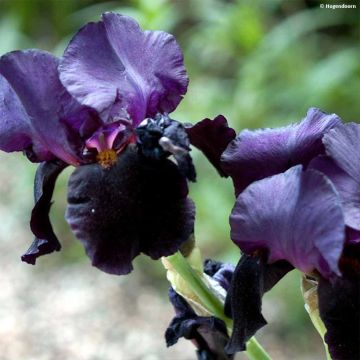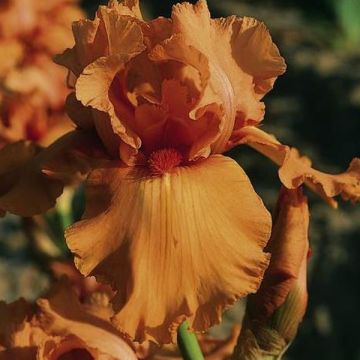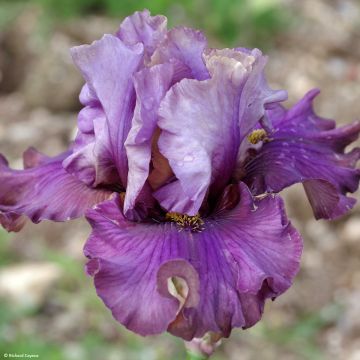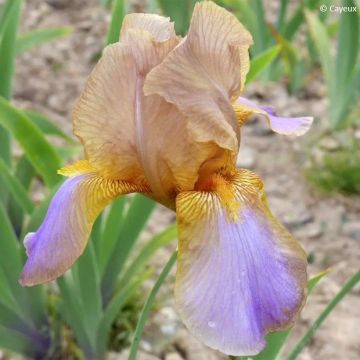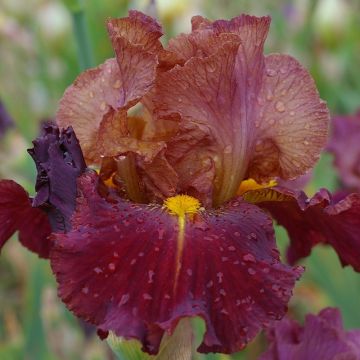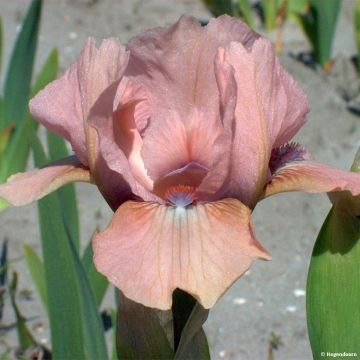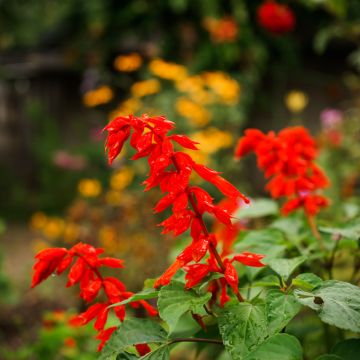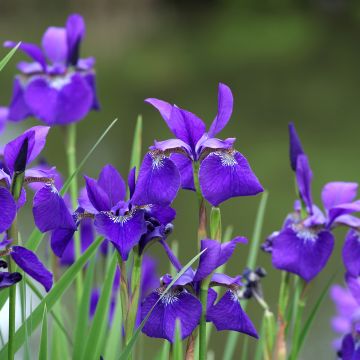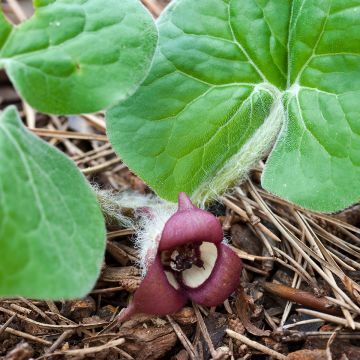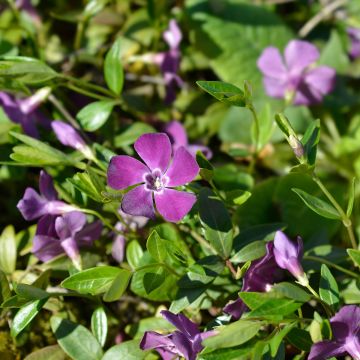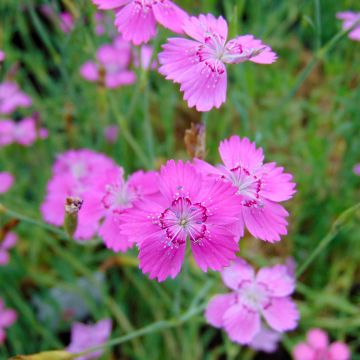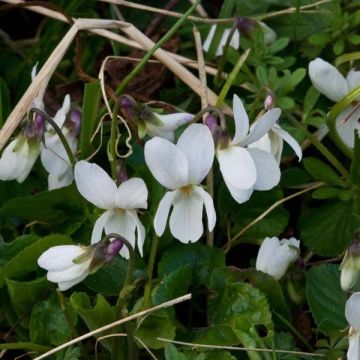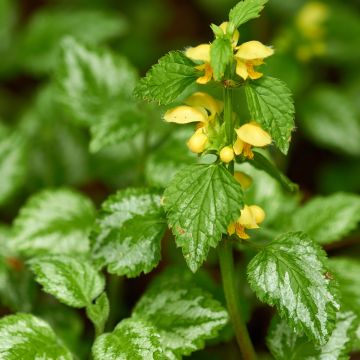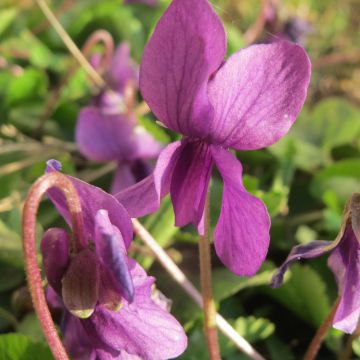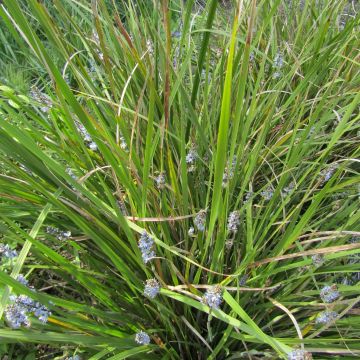Shipping country and language
Your country of residence may be:
Your country of residence is:
For a better user experience on our website, you can select:
Your shipping country:
Andorra
Austria
Belgium
Bulgaria
Canada
Chile
Croatia
Cyprus
Czechia
Denmark
Estonia
Finland
France
Germany
Greece
Hungary
Iceland
Ireland
Italy
Latvia
Lithuania
Luxembourg
Malta
Monaco
Netherlands
Poland
Portugal
Romania
Slovakia
Slovenia
Spain
Sweden
Switzerland
United Kingdom
We only deliver seed and bulb products to your country. If you add other products to your basket, they cannot be shipped.
Language:
French
German
Spanish
English
My Account
Hello
My wish lists
Plantfit
Log in / Register
Existing customer?
New customer?
Create an account to track your orders, access our customer service and, if you wish, make the most of our upcoming offers.
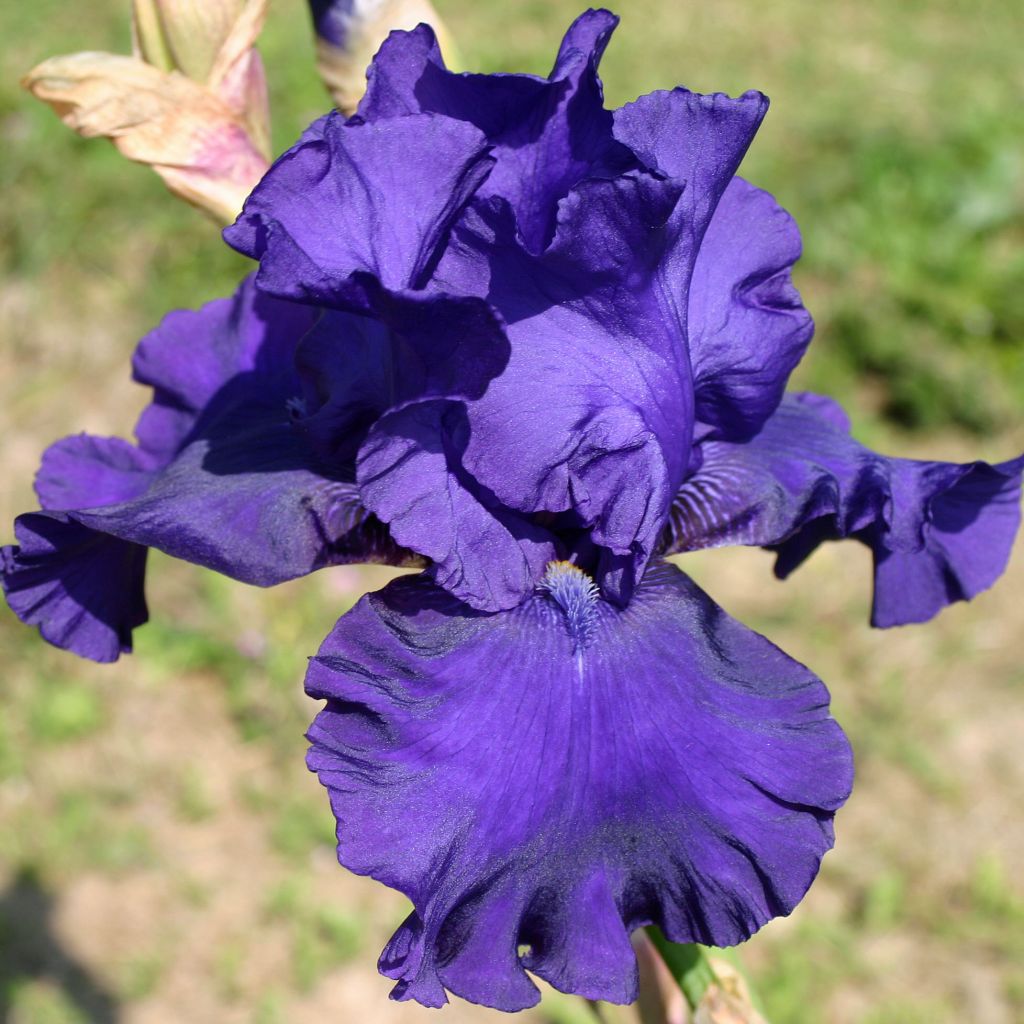

Iris germanica Blueberry Bliss - Bearded Iris
Iris germanica Blueberry Bliss - Bearded Iris
Iris germanica Blueberry Bliss
German Iris, Bearded Iris
Stunning floriferous Iris with a deep blue colour, very resistant to wind and naked.
Anne, 09/05/2020
Why not try an alternative variety in stock?
View all →Order in the next for dispatch today!
Dispatch by letter from €3.90.
Delivery charge from €5.90 Oversize package delivery charge from €6.90.
More information
This item is not available in your country.
Schedule delivery date,
and select date in basket
This plant carries a 12 months recovery warranty
More information
We guarantee the quality of our plants for a full growing cycle, and will replace at our expense any plant that fails to recover under normal climatic and planting conditions.
From €5.90 for pickup delivery and €6.90 for home delivery
Express home delivery from €8.90.

Does this plant fit my garden?
Set up your Plantfit profile →
Description
Iris germanica 'Blueberry Bliss', also known as the garden iris, offers huge navy blue to 'Navy' blue corollas in April-May, quite early in the season, completely solid, including the beard. Petals and sepals are slightly undulated. The stem is solid and branching, allowing for a long flowering period. Multiple award-winning variety. Perfect in flower beds, borders, and on slopes.
The 'Blueberry Bliss' Iris is a perennial rhizomatous and deciduous plant, with an upright clump-forming habit starting from spring. It belongs to the Iridaceae family. It is one of the many cultivars obtained over centuries, with a controversial origin that revolves around the number of chromosomes of potential ancestors. It should be noted that Garden Irises have European origins. 'Blueberry Bliss' is a large variety, reaching a height of 1m (3ft) when in bloom, with numerous buds, and the clump spreading indefinitely over time, with the central rhizomes becoming bare in favour of the outer rhizomes. It has an elegant upright habit in a dense clump. The foliage consists of long sword-shaped, glaucous green and highly veined leaves. In April, floral stems appear, each with 3 or 4 branches, each of which will produce 8 to 10 buds. Huge flowers, 16cm (6in) tall and 10cm (4in) wide, open from the top towards the lower branches. As always with Garden Irises, the colour of this plant is enhanced by the texture of the petals and sepals. It is worth noting that the flowers are also highly fragrant.
Obtained Schreiner 2004.
To accompany the irises, plants should be chosen according to their needs (exposure, soil...), their "respectful" growth habit towards irises (low-growing or light-foliaged plants), and their decorative complementarity (appearance, flowering time). For example, Gaura will cast little shade on the irises and will keep the deflowered iris bed attractive throughout the summer. Eschscholzia will be content with the same dry and poor soil as the iris. Geraniums, salvias, and Libertias also pair well with irises, lightening their habit. Slopes and terraced edges can be stabilized by dense plantings of old diploid varieties that can remain in place and require very little care. If the goal is more decorative and easy access for care, more modern tetraploid varieties can be chosen, such as intermediate varieties that are less likely to be toppled by the wind than the tall ones.
At the base of a wall, the relative shelter from the wind allows for the use of tall irises. Of course, they can also be planted in the foreground of shorter and earlier varieties.
Path border: the entire range can be used, from the early dwarfs under 40cm (16in) tall, to the tall irises over 75cm (30in) tall that bloom in May, including intermediate varieties (in terms of size and earliness) and border irises, which are of medium size but flower with the tall ones. Tall irises exposed to the wind may need staking to prevent them from being flattened.
Mass planting border: the domain of border irises but also dwarfs, depending on the circumstances.
Mixed border: the entire size range can be used, chosen according to the position (foreground, background) and the size of the surrounding plants.
Iris bed, iris garden: the paradise of iris enthusiasts where the choice and arrangement of varieties (shape, colour, fragrance...) reflects individual taste. The use of the full range of bearded irises allows for two and a half months of flowers in spring. Choosing so-called re-blooming irises offers some additional flowers in late summer or autumn.
The vegetable garden can be adorned with a few clumps or borders of irises, as it is also the traditional place for growing flowers for cutting.
Iris germanica Blueberry Bliss - Bearded Iris in pictures
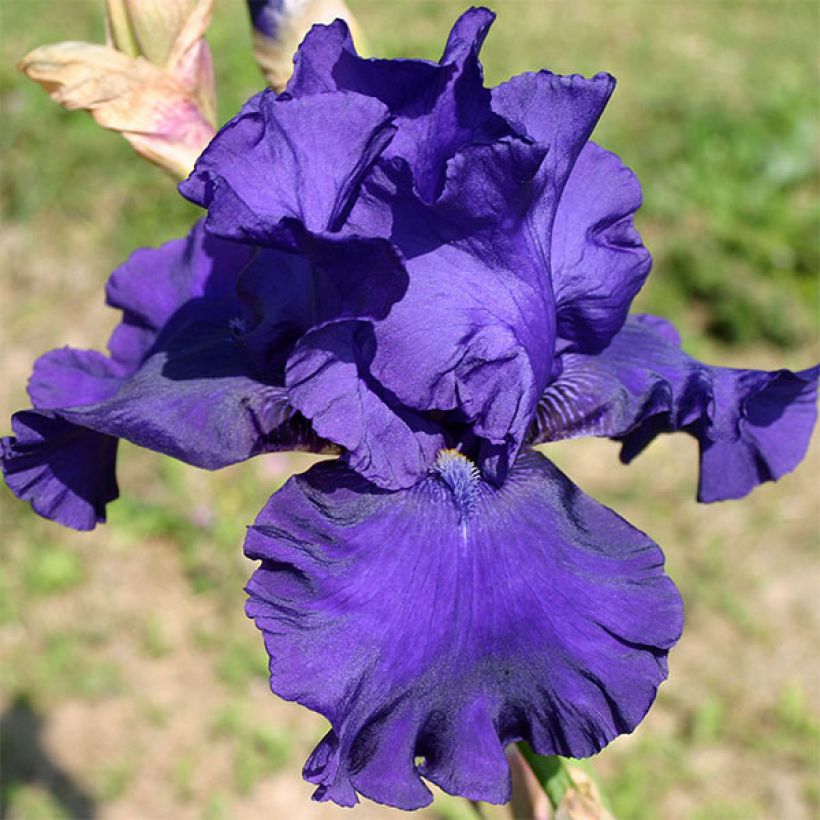

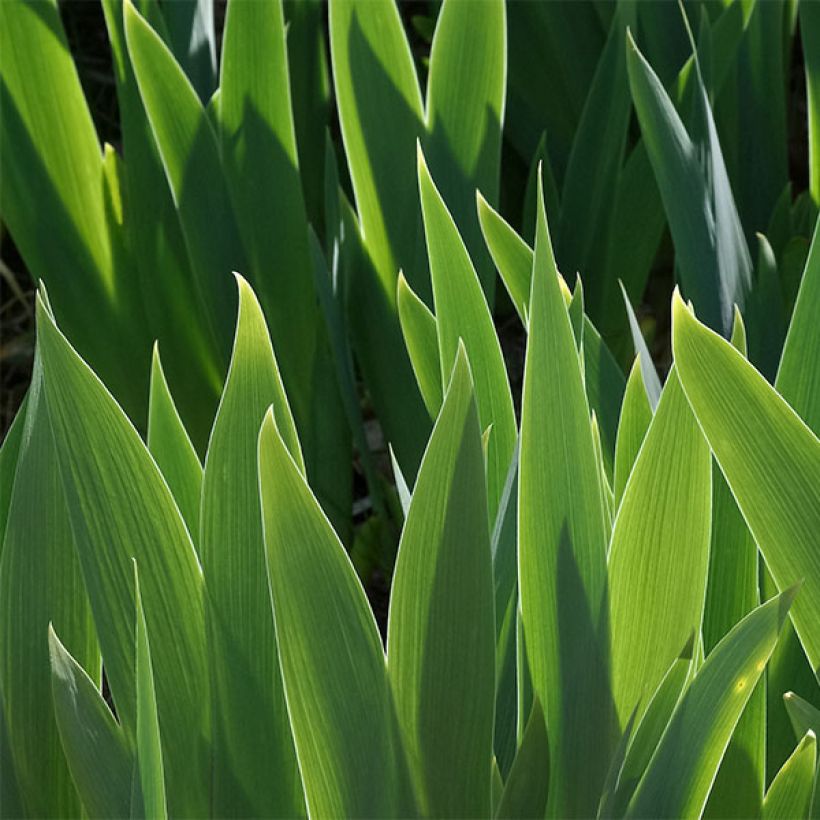

Flowering
Foliage
Plant habit
Botanical data
Iris
germanica
Blueberry Bliss
Iridaceae
German Iris, Bearded Iris
Cultivar or hybrid
Other German Iris - Bearded Iris
Planting and care
Do you have a sunny, warm and rather dry location in the summer?
This is the ideal location for planting irises! In the shade, they vegetate but do not flower. They are grown in all regions. Hardy, they do not need winter protection. Well-drained soil is perfect, even if it is rather dry and chalky. Too much moisture promotes rootstock rot. Plant from July to September. This allows the rootstocks to grow sufficiently before being dug up, and to develop new roots before winter. They should be planted as soon as they are purchased for best results. Plan to divide the irises every 4 years or so to give them fresh soil. They have vigorous growth and require space to develop and flower well. They are planted with spacing appropriate to the size and vigour of the variety: about 34-50cm (13-20in) for tall varieties (5 to 10 plants per square metre). In a monochrome planting, the rootstocks are planted in a staggered pattern. To create a mix of colours, it is recommended for the overall aesthetic of the iris bed to plant them in groups of several plants of the same variety. Always consider the direction of growth of the rootstocks by arranging them in a star shape, with buds and leaves facing outward, and spacing them well from other varieties so they have room to develop.
Planting
Dig a hole that is wide and deep enough. Create a conical mound of soil on which to place the rootstock and spread out the roots. Cover the roots. It is important for the rootstock to be left slightly exposed above the surface of the soil. It should not be planted in a depression (risk of rot), so anticipate that the soil will settle and the iris will sink. In clay or moist soil, the rootstock may even be raised on a slight mound of a few centimetres. To make the soil adhere to the roots, lightly tamp the soil and water it abundantly immediately after planting. Water 2-3 times if necessary until it establishes.
Maintenance:
Keep the soil weed-free by lightly hoeing, taking care not to damage the rootstocks or roots. Weeds shade the irises, retain moisture (causing rot), and attract slugs. Similarly, remove dry leaves. If they are diseased (reddish-brown spots of heterosporiosis), burn them. Remove faded flowers.
Planting period
Intended location
Care
- , onOrder confirmed
Reply from on Promesse de fleurs
Spring flowering perennials
Haven't found what you were looking for?
Hardiness is the lowest winter temperature a plant can endure without suffering serious damage or even dying. However, hardiness is affected by location (a sheltered area, such as a patio), protection (winter cover) and soil type (hardiness is improved by well-drained soil).

Photo Sharing Terms & Conditions
In order to encourage gardeners to interact and share their experiences, Promesse de fleurs offers various media enabling content to be uploaded onto its Site - in particular via the ‘Photo sharing’ module.
The User agrees to refrain from:
- Posting any content that is illegal, prejudicial, insulting, racist, inciteful to hatred, revisionist, contrary to public decency, that infringes on privacy or on the privacy rights of third parties, in particular the publicity rights of persons and goods, intellectual property rights, or the right to privacy.
- Submitting content on behalf of a third party;
- Impersonate the identity of a third party and/or publish any personal information about a third party;
In general, the User undertakes to refrain from any unethical behaviour.
All Content (in particular text, comments, files, images, photos, videos, creative works, etc.), which may be subject to property or intellectual property rights, image or other private rights, shall remain the property of the User, subject to the limited rights granted by the terms of the licence granted by Promesse de fleurs as stated below. Users are at liberty to publish or not to publish such Content on the Site, notably via the ‘Photo Sharing’ facility, and accept that this Content shall be made public and freely accessible, notably on the Internet.
Users further acknowledge, undertake to have ,and guarantee that they hold all necessary rights and permissions to publish such material on the Site, in particular with regard to the legislation in force pertaining to any privacy, property, intellectual property, image, or contractual rights, or rights of any other nature. By publishing such Content on the Site, Users acknowledge accepting full liability as publishers of the Content within the meaning of the law, and grant Promesse de fleurs, free of charge, an inclusive, worldwide licence for the said Content for the entire duration of its publication, including all reproduction, representation, up/downloading, displaying, performing, transmission, and storage rights.
Users also grant permission for their name to be linked to the Content and accept that this link may not always be made available.
By engaging in posting material, Users consent to their Content becoming automatically accessible on the Internet, in particular on other sites and/or blogs and/or web pages of the Promesse de fleurs site, including in particular social pages and the Promesse de fleurs catalogue.
Users may secure the removal of entrusted content free of charge by issuing a simple request via our contact form.
The flowering period indicated on our website applies to countries and regions located in USDA zone 8 (France, the United Kingdom, Ireland, the Netherlands, etc.)
It will vary according to where you live:
- In zones 9 to 10 (Italy, Spain, Greece, etc.), flowering will occur about 2 to 4 weeks earlier.
- In zones 6 to 7 (Germany, Poland, Slovenia, and lower mountainous regions), flowering will be delayed by 2 to 3 weeks.
- In zone 5 (Central Europe, Scandinavia), blooming will be delayed by 3 to 5 weeks.
In temperate climates, pruning of spring-flowering shrubs (forsythia, spireas, etc.) should be done just after flowering.
Pruning of summer-flowering shrubs (Indian Lilac, Perovskia, etc.) can be done in winter or spring.
In cold regions as well as with frost-sensitive plants, avoid pruning too early when severe frosts may still occur.
The planting period indicated on our website applies to countries and regions located in USDA zone 8 (France, United Kingdom, Ireland, Netherlands).
It will vary according to where you live:
- In Mediterranean zones (Marseille, Madrid, Milan, etc.), autumn and winter are the best planting periods.
- In continental zones (Strasbourg, Munich, Vienna, etc.), delay planting by 2 to 3 weeks in spring and bring it forward by 2 to 4 weeks in autumn.
- In mountainous regions (the Alps, Pyrenees, Carpathians, etc.), it is best to plant in late spring (May-June) or late summer (August-September).
The harvesting period indicated on our website applies to countries and regions in USDA zone 8 (France, England, Ireland, the Netherlands).
In colder areas (Scandinavia, Poland, Austria...) fruit and vegetable harvests are likely to be delayed by 3-4 weeks.
In warmer areas (Italy, Spain, Greece, etc.), harvesting will probably take place earlier, depending on weather conditions.
The sowing periods indicated on our website apply to countries and regions within USDA Zone 8 (France, UK, Ireland, Netherlands).
In colder areas (Scandinavia, Poland, Austria...), delay any outdoor sowing by 3-4 weeks, or sow under glass.
In warmer climes (Italy, Spain, Greece, etc.), bring outdoor sowing forward by a few weeks.
